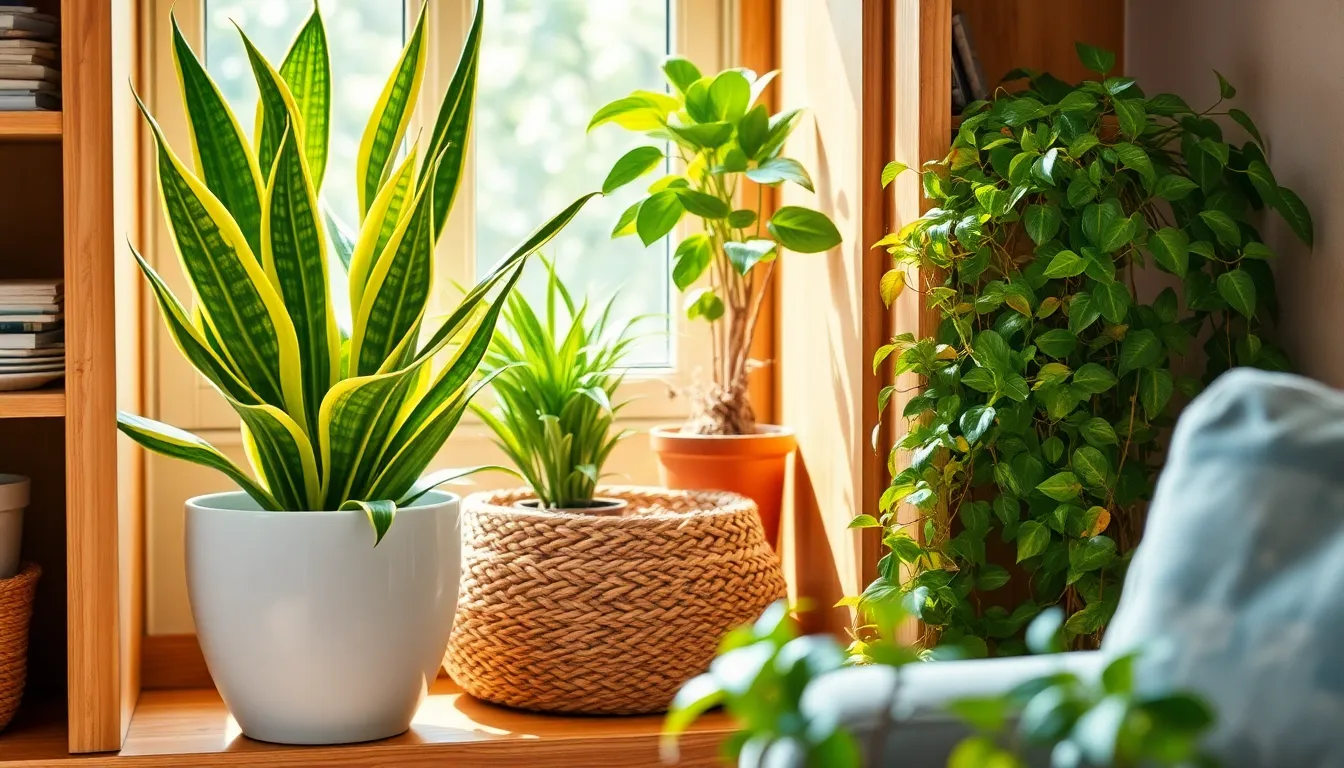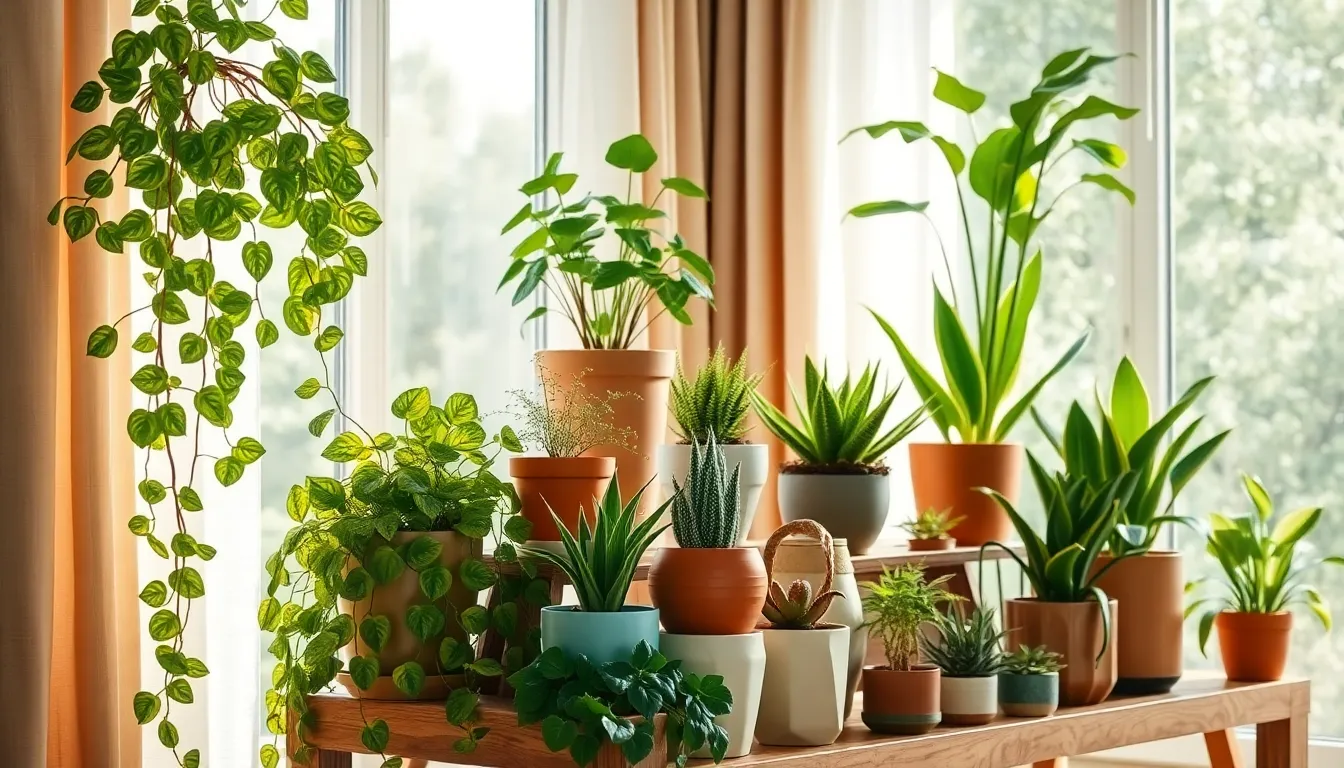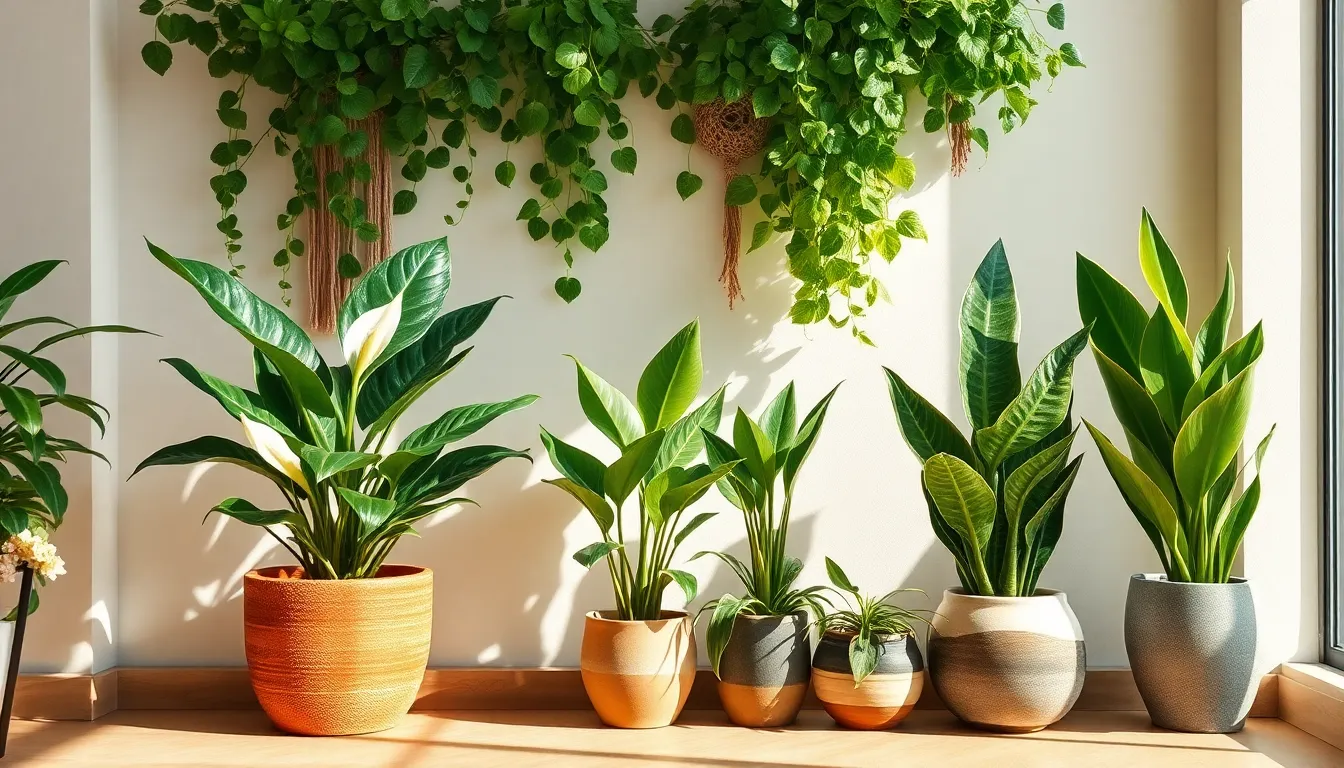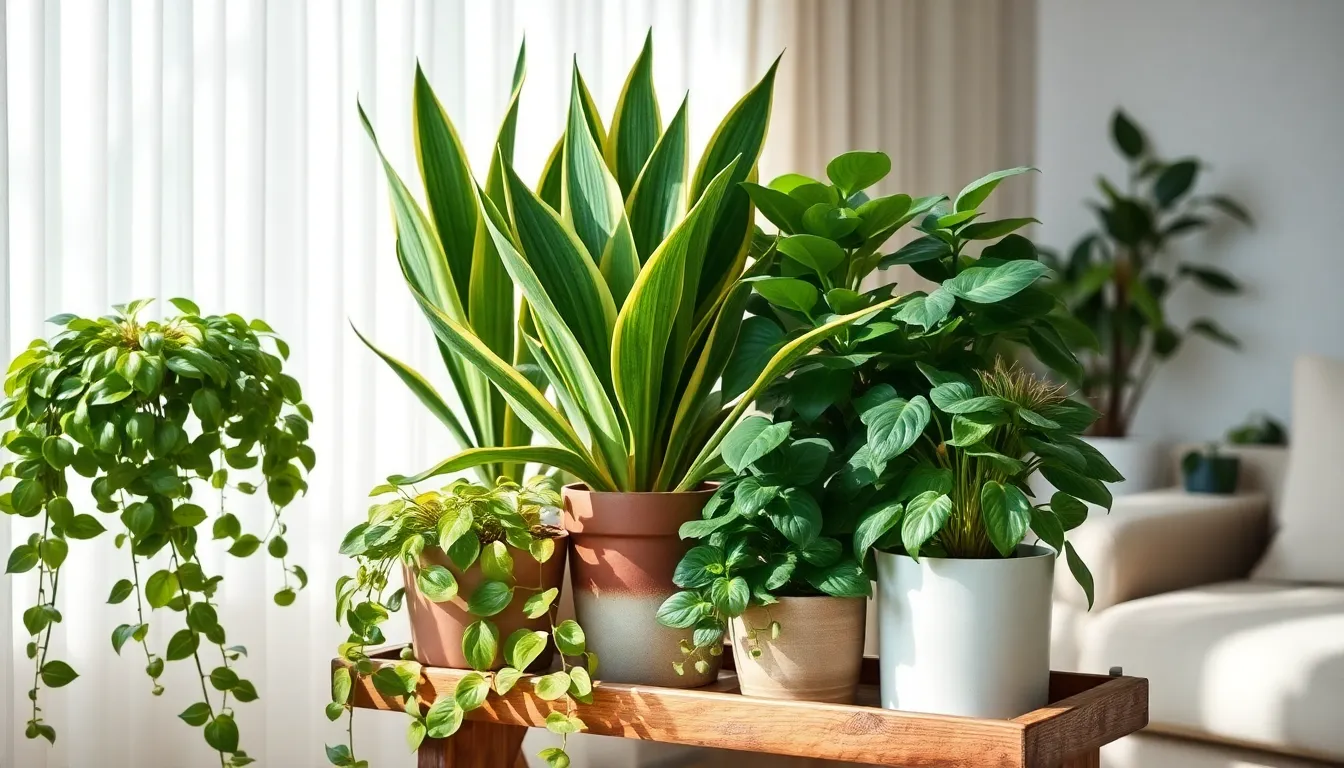Bringing a touch of greenery indoors is more than just an aesthetic choice; it’s a way to invite nature into your daily life, offering a sense of tranquility and a breath of fresh air right within your home. Whether you’re a novice just dipping your toes into the world of plants or a seasoned gardener looking to simplify your indoor greenery, understanding the essentials of easy-care indoor plants is your first step towards cultivating a thriving indoor oasis.
For beginners, the journey of indoor gardening can feel like stepping into a world filled with endless possibilities, each plant offering its own unique charm and care needs. Experienced gardeners, on the other hand, will appreciate the simplicity and resilience that these beginner-friendly plants offer, providing a delightful break from the more demanding aspects of gardening. In this article, we’ll explore a selection of low-maintenance indoor plants that are not only forgiving but also rewarding, helping you build confidence and skills as you nurture them.
As you read on, you’ll discover which plants thrive with minimal fuss, how to create environments they love, and tips for keeping them healthy and vibrant. We’ll guide you through the basics of light, water, and soil preferences for these hardy botanicals, ensuring that your indoor garden flourishes with ease. With this knowledge, you’ll be well-equipped to transform your living space into a lush, green haven that not only enhances your home but also nurtures your well-being.
Choosing Beginner-Friendly Houseplants
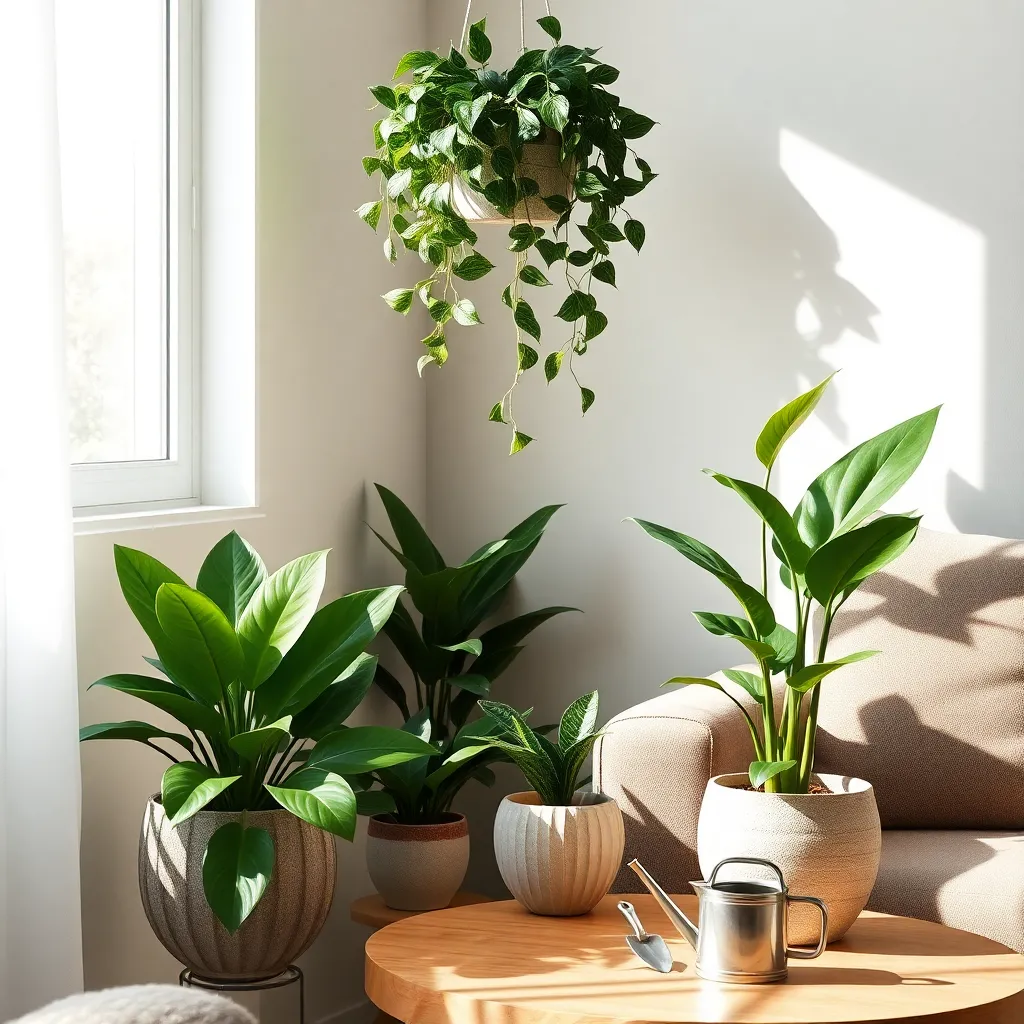
For new plant enthusiasts, starting with beginner-friendly houseplants is a smart choice. These plants are typically low-maintenance, making them perfect for those just getting acquainted with plant care.
Consider the pothos plant, which is known for its resilience and ability to thrive in various lighting conditions. It requires watering only when the top inch of soil feels dry, making it a forgiving choice for beginners.
An equally great option is the snake plant, which can withstand periods of neglect and low light. Ensure it is potted in well-draining soil, such as a cactus mix, and water sparingly to avoid root rot.
For those interested in a touch of greenery with minimal effort, the ZZ plant is ideal. It thrives in indirect light and only needs watering every couple of weeks, making it a favorite for busy individuals.
Understanding Light Needs Indoors
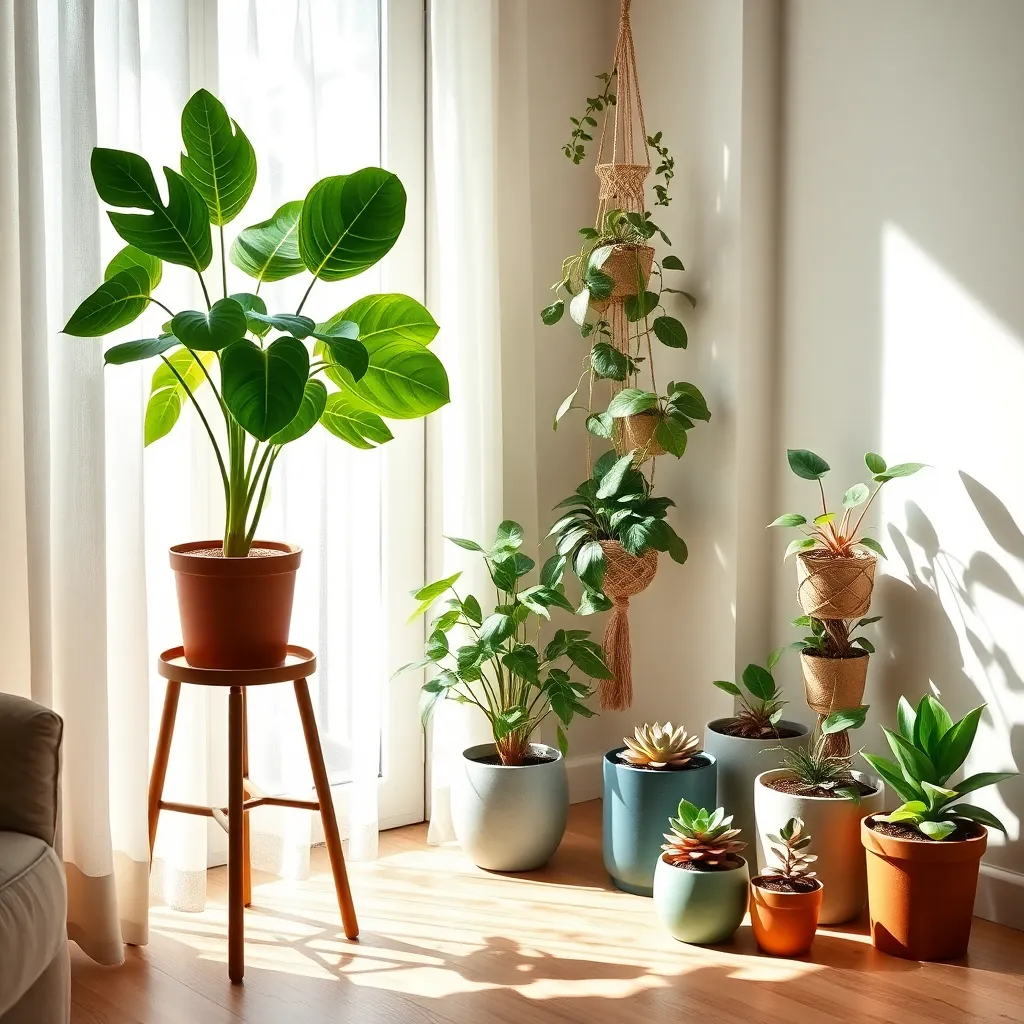
Understanding the light needs of your indoor plants is crucial for their growth and well-being. Some plants thrive in direct sunlight, while others prefer the soft glow of indirect light.
To determine the type of light your plant needs, check the plant’s label or do a quick online search about its natural habitat. Bright, direct light is typically best for succulents and cacti, which are adapted to intense sun.
If your space lacks sufficient natural light, consider using artificial grow lights to supplement your plants’ needs. These lights can be particularly useful in darker rooms or during the shorter days of winter.
For beginners, a simple way to gauge light is to place a piece of white paper where your plant will be. Observe the shadows; a crisp shadow indicates bright light, while a faint shadow suggests medium light.
Remember that most indoor plants prefer bright, indirect light, which mimics the dappled sunlight found under a tree canopy. Rotate your plants every few weeks to ensure even light exposure on all sides, promoting balanced growth.
Be mindful of the changing seasons, as light conditions can vary significantly throughout the year. Adjust the positioning of your plants or the duration of artificial lights to accommodate these changes and support healthy growth.
Simple Watering Guidelines
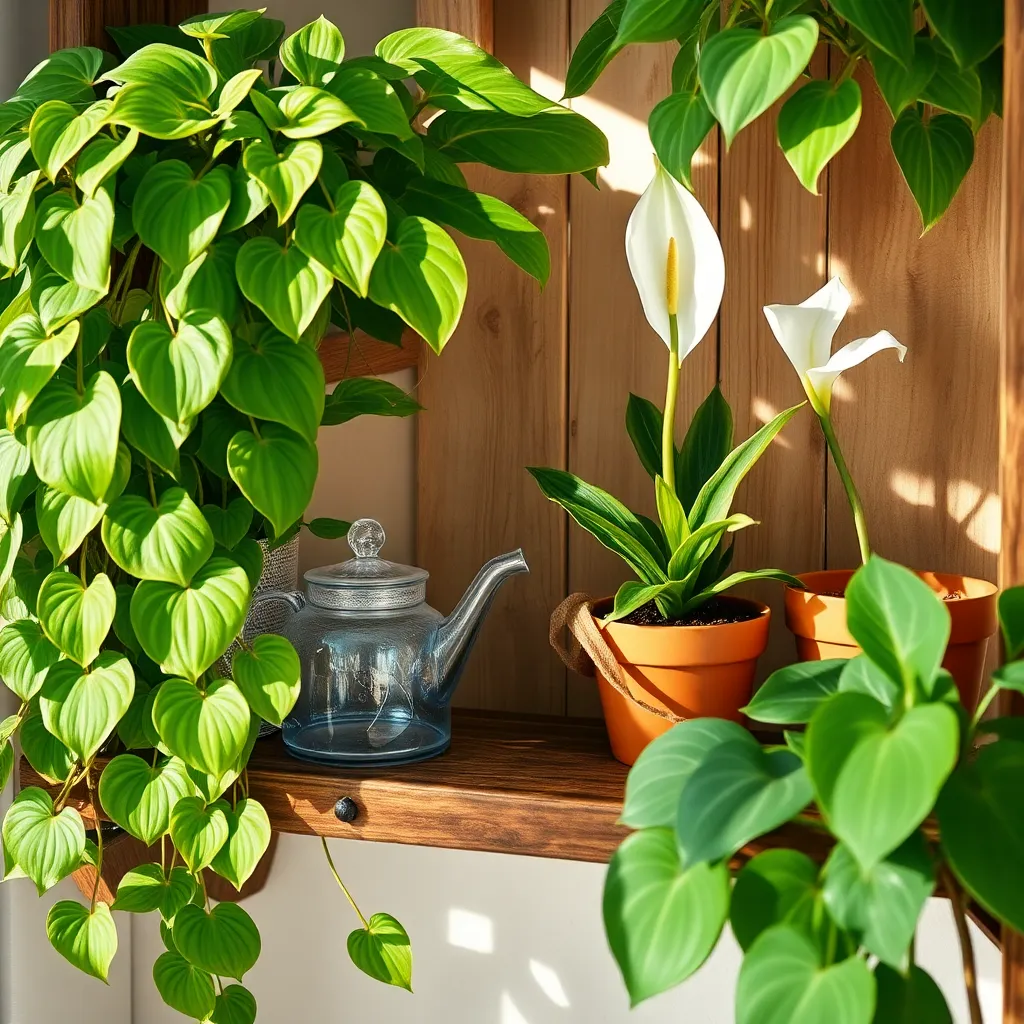
Watering indoor plants might seem straightforward, but it requires a bit of finesse to master. Too much water can drown roots, while too little leaves them parched, so finding a balance is key.
Begin by understanding your plant’s specific watering needs. Some plants, like succulents, thrive on infrequent watering, while others, like ferns, need consistently moist soil.
To determine when to water, check the top inch of soil with your finger. If it feels dry, it’s time to water; if it’s still moist, wait a few more days.
When watering, ensure that the entire root ball gets a good soak. This means watering until you see a bit of water draining from the bottom of the pot, which ensures thorough hydration.
Using the right soil can significantly affect how often you’ll need to water. Consider using a well-draining potting mix that includes perlite or sand for plants that prefer dry conditions.
Remember, environmental factors such as humidity and temperature can alter your plant’s watering needs. In drier climates or heated homes, plants might require more frequent watering.
As you gain experience, you’ll become adept at recognizing signs of overwatering or underwatering. Wilting leaves or yellowing can be indicators that your watering routine needs adjustment.
Basic Potting and Soil Tips
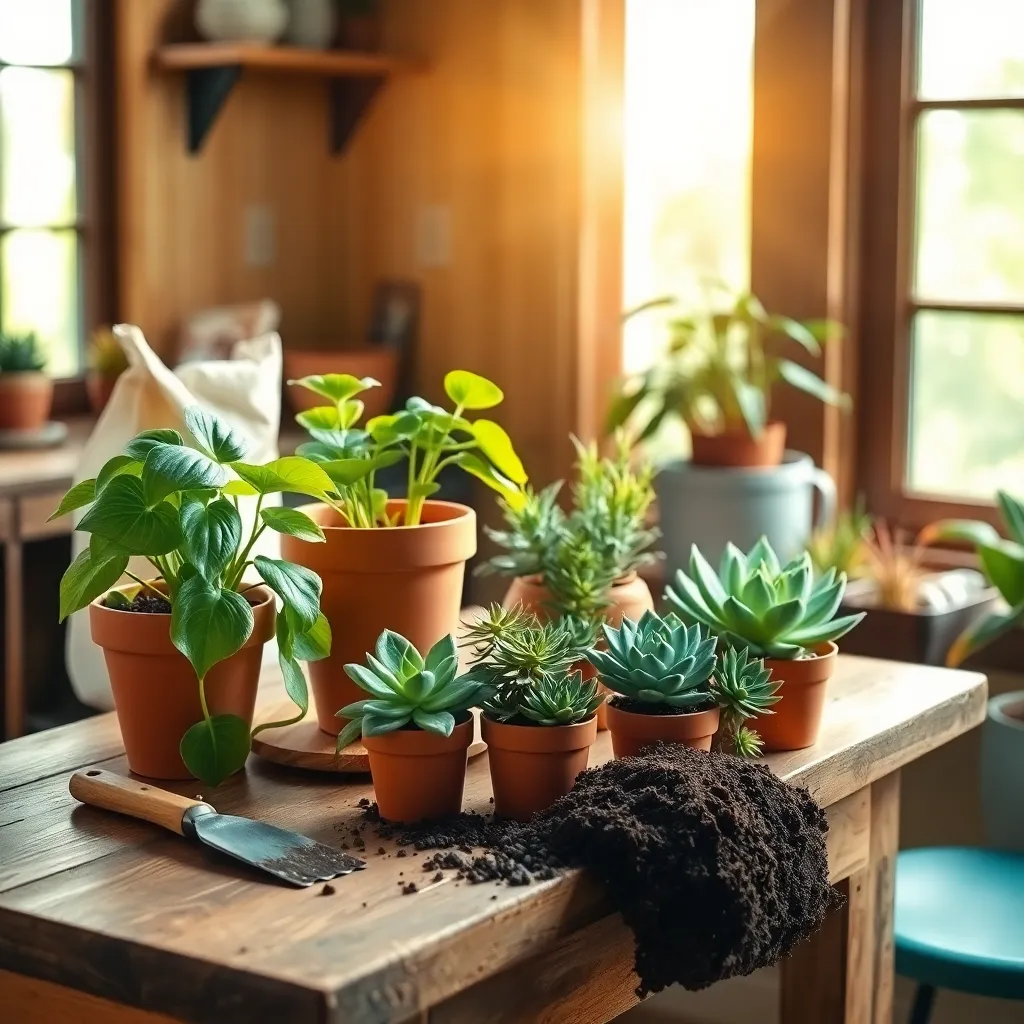
Understanding the right potting and soil techniques is crucial for thriving indoor plants. For most indoor plants, using a well-draining potting mix is essential to prevent root rot and ensure healthy growth.
Choose pots with drainage holes to allow excess water to escape, reducing the risk of overwatering. If you’re using a decorative pot without a drainage hole, consider placing a smaller pot inside that does have one.
It’s beneficial to use a potting mix specifically formulated for your type of plant. For instance, succulents and cacti thrive in a gritty, fast-draining soil, while tropical plants prefer a peat-based mix that retains more moisture.
Repotting is necessary when plants outgrow their pots or when the soil becomes compacted. Aim to repot every 1-2 years, choosing a pot size that’s one to two inches larger in diameter to give roots room to expand.
For those interested in organic gardening, consider incorporating natural amendments like worm castings or compost into your potting mix. This enriches the soil with nutrients and enhances plant health without the need for chemical fertilizers.
Low-Maintenance Plants to Start With
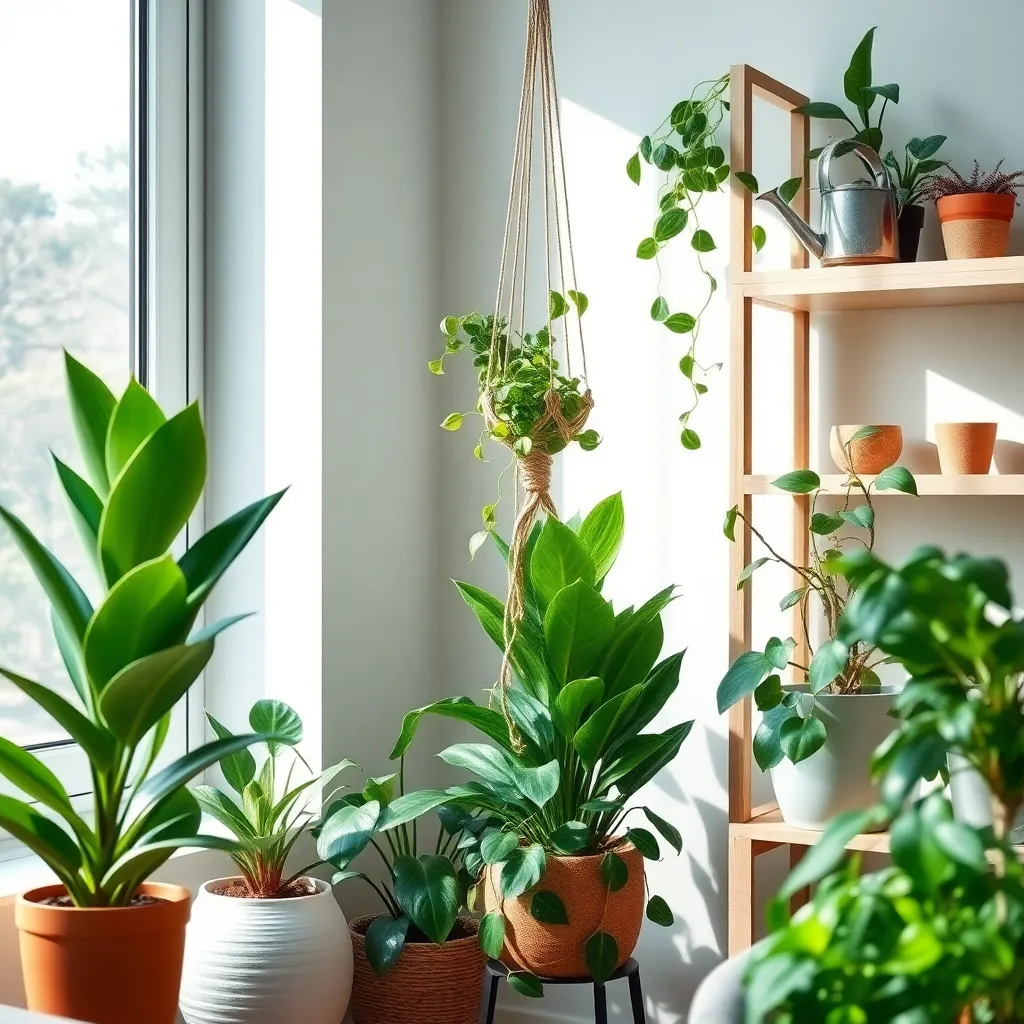
Starting with low-maintenance plants is a great way to build confidence in your indoor gardening skills. One excellent choice is the snake plant, known for its ability to withstand neglect and low light conditions.
To care for a snake plant, place it in a pot with well-draining soil, such as a cactus mix. Water it sparingly, allowing the soil to dry out completely between waterings to prevent root rot.
The pothos plant is another fantastic option for beginners due to its adaptability. Pothos thrive in a variety of light conditions, from low light to bright, indirect sunlight, making them versatile for different home environments.
Ensure pothos are planted in standard potting soil, and water them every 1-2 weeks depending on your home’s humidity. For a more lush appearance, consider regularly pruning the vines, which also encourages fuller growth.
The spider plant is perfect for those who want a touch of greenery with minimal effort. These plants prefer bright, indirect light and are quite forgiving if you forget to water them occasionally.
Use a general-purpose potting mix for spider plants and water them once the soil feels dry to the touch. To keep them thriving, you might want to fertilize them monthly during the growing season with a balanced liquid fertilizer.
Conclusion: Growing Success with These Plants
In nurturing relationships, much like tending to indoor plants, the right approach can lead to flourishing connections. This article explored five key concepts: understanding each other’s needs, creating a nurturing environment, consistent communication, patience as relationships grow, and celebrating milestones together. These principles, akin to selecting the perfect beginner-friendly plants, form the foundation for a thriving relationship.
As an immediate next step, consider choosing one area to focus on with your partner today, such as enhancing communication or planning a shared goal. This action will pave the way for deeper understanding and connection.
Remember, every relationship has the potential to bloom beautifully. Bookmark this article to revisit these insights whenever you need guidance or inspiration. Just as plants require ongoing care and attention, relationships thrive with consistent effort and mindfulness.
Your journey to relationship success is ongoing, and with each step, you’re building a stronger, more resilient connection. Embrace these concepts, take action today, and watch how your relationship transforms and flourishes. Save this article as your go-to guide, ensuring your path to relationship success is always within reach.

